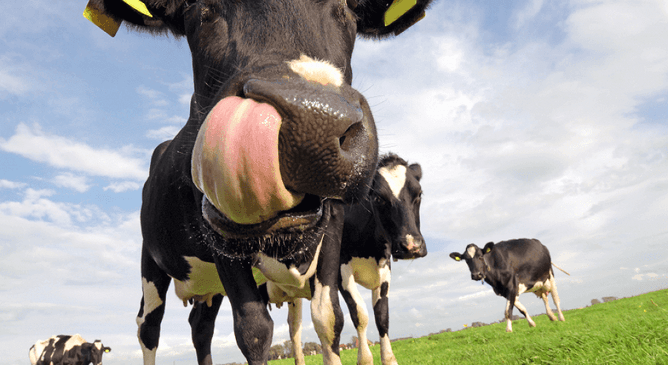Vet Keryn came across an interesting case of a coughing cow on a farm recently and her investigations lead to an interesting diagnosis.
I was recently called to a farm to see three sick cows that had suddenly gone off their milk and were frothing at the mouth. However, when someone tried to get them out of the paddock, two of them made a miraculous recovery and refused to play the game, so only one cow was at the shed when I arrived.
The cow in the yards was reluctant to walk and had her neck stretched out gasping for air. On examination, her temperature was normal and her rumen was turning over normally, but in the short time I was examining her, her air hunger appeared to get worse and progressed to open-mouthed breathing. She was grunting as she breathed and had whistling noises in her lungs.
Due to the sudden onset of signs and rapid deterioration, either poisoning or an acute allergic reaction seemed the most likely possibility. Fog Fever (brought on by high tryptophan concentrations in a pasture with abundant clover) could also present like this, but the farmer assured me there was no clover in the paddock. The cows were fed mainly grass with a bit of PKE/DDG in the shed and had had no recent changes in diet. The farmer didn’t think they could have had access to any toxins.
To cover the possibility of an allergic reaction, I gave the cow some Antimine in the jugular vein. The cow chose this moment to literally start coughing up her lungs, showering me with mucus, blood and bits of the cow. At this point, the prognosis did not look good.
There wasn’t much more we could do for her, so the farmer and I left her in the yards for a few minutes to give the Antimine time to work, and drove around the paddock to see what was there. We found nothing in the paddock that explained the symptoms.
Back at the shed, the cow had not improved, so we euthanased her and performed a post-mortem. She had a full rumen, and most of her organs were normal except for the lungs. In the trachea was more of the stuff that she had coughed up earlier, and there was extensive emphysema caused by her gasping for air. However, there was no sign of any underlying disease or damage to the lungs, except for a lot of unidentified brownish-green sludge in the smaller airways. I still wasn’t sure what was going on, so sent some samples off to the lab hoping the pathologist could shed some light on it.
While we were doing the post-mortem, one of the other affected cows had come in for milking and returned to a paddock next to where we were working. We could see her eating normally, but stopping occasionally to cough. Neither she nor the other cow had any further problems.
Under the microscope, the pathologist found that the airways in the lungs were completely blocked by plant material (the greenish-brown sludge we had seen at post-mortem) and the surrounding air-sacs were collapsed and full of blood and inflammatory cells. The lungs themselves were normal. The diagnosis was airway obstruction by inhaled plant material, probably PKE. In other words, the cow had suffocated on palm kernel.
The pathologist commented that he had never seen this before, but had heard of it happening in the North Island. There are reports of allergic bronchitis in people from dusty PKE but in this case, the cow died as a consequence of blockage before anything like that could develop. The interesting thing is that the PKE was being fed with molasses, so it shouldn't have been particularly dusty. The farm has had no further problems despite continuing to feed PKE, so possibly it was just a case of inadequate mixing of the PKE with the molasses on that one day.
- Keryn Cresswell

